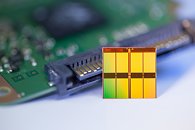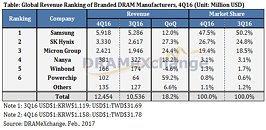TRENDFOCUS Reports SSD Pricing Increases up to 36%, YoY; 2018 to Offer Respite
Market intelligence analysis company TRENDFOCUS revealed in its latest blog post how SSD market has increased by up to 36% in the last four quarters, with price hikes after prices hikes accompanying increasing demand (and sales) of the speedy storage media. And TRENDFOCUS warns that these price hikes are like here to stay until 2017 has run its course, with projections of price reductions only materializing in early 2018. This should put some brakes towards the trend of including SSD storage on mainstream OEM computers and laptops, as the price increase from adding this type of storage would bring prices beyond the mainstream. Likewise, the aggressive ratio at which SSDs were replacing HDDs as storage media as correspondingly declined a bit, though this move still stays strong and isn't likely to (nor should it) fully subside.
The company also sees an increasing pricing delta between conventional SATA-based solutions and their higher-performing PCIe counterparts, with the pricing of PCIe-based SSDs increasing more than those that leverage SATA connections. TRENDFOCUS reports how 2017 pricing hinges on 3D NAND ramping as predicted this year, with higher prices in the demand-heavy back-to-school season) if this ramp fails. The company still feels confident about an eventual return to quarterly takedowns on SSD pricing, coeteris paribus, come 2018.
The company also sees an increasing pricing delta between conventional SATA-based solutions and their higher-performing PCIe counterparts, with the pricing of PCIe-based SSDs increasing more than those that leverage SATA connections. TRENDFOCUS reports how 2017 pricing hinges on 3D NAND ramping as predicted this year, with higher prices in the demand-heavy back-to-school season) if this ramp fails. The company still feels confident about an eventual return to quarterly takedowns on SSD pricing, coeteris paribus, come 2018.


